Hazards prediction research emphasizes advancing and utilizing computer models for predicting storm surge, waves, and flooding associated with severe weather events along the U.S. East and Gulf Coasts and creating products from these predictions that improve coastal resilience. The projects are carried out by a network of collaborators at UNC, other US academic institutions, and not for profit / professional organizations.
ADCIRC Prediction System (APS)™ Enhancements and Coordination
Investigator: Rick Luettich (University of North Carolina at Chapel Hill)
This project supports development, implementation and coordination across the APS portfolio, from capability improvements to product transition.
Products
- ADCIRC v56- Updates to ADCIRC code including the new channel algorithm
- APS/Floodwater – Release of ecFlow based job management system for APS
- Situational awareness briefings – Daily coastal flooding situational awareness briefing during hurricanes that impact the US East and Gulf coasts.
- ADCIRC data products provided to NC DOT for ingest into T-SAPP and BridgeWatch decision support systems
Publications / Presentations
- Bunya, S., R.A. Luettich, Jr., B.O. Blanton, 2023, “Techniques to Embed Channels in Finite Element Shallow Water Equation Models”, Advances in Engineering Software 185 (2023) 103516, https://doi.org/10.1016/j.advengsoft.2023.103516.
- Asher, T.G., R.A. Luettich, Jr., A Hindcast of Coastal Flooding from Hurricane Irma, Ocean Modeling, in review
- Luettich, R., B. Blanton, S. Bunya, M. Bilskie, N. Mumtaz, Z. Cobell, C. Dietrich, J. Gorski, D. Cox, J. Sypniewski, I. Ginis, T. Hara, A. Papandreou, Predicting Waves, Storm Surge, Flooding and Damage due to Hurricane Ian (2022), 3rd International Workshop on Waves, Storm Surges, and Coastal Hazards, Oct 4, 2023, South Bend, IN.
- Luettich, R., B. Blanton, S. Bunya, M. Bilskie, N. Mumtaz, Z. Cobell, C. Dietrich, J. Gorski, D. Cox, M. Amini, S. Figueira, I. Ginis, T. Hara, A. Papandreou, Predicting Waves, Storm Surge, Flooding and Damage due to Hurricanes Ian (2022) and Idalia (2023), Ocean Sciences Meeting, New Orleans, LA
- Luettich, R., Z. Cobell, B.O. Blanton, S. Bunya, ADCIRC Prediction System for Modeling Compound Flooding, American Meteorological Society, Baltimore, MD
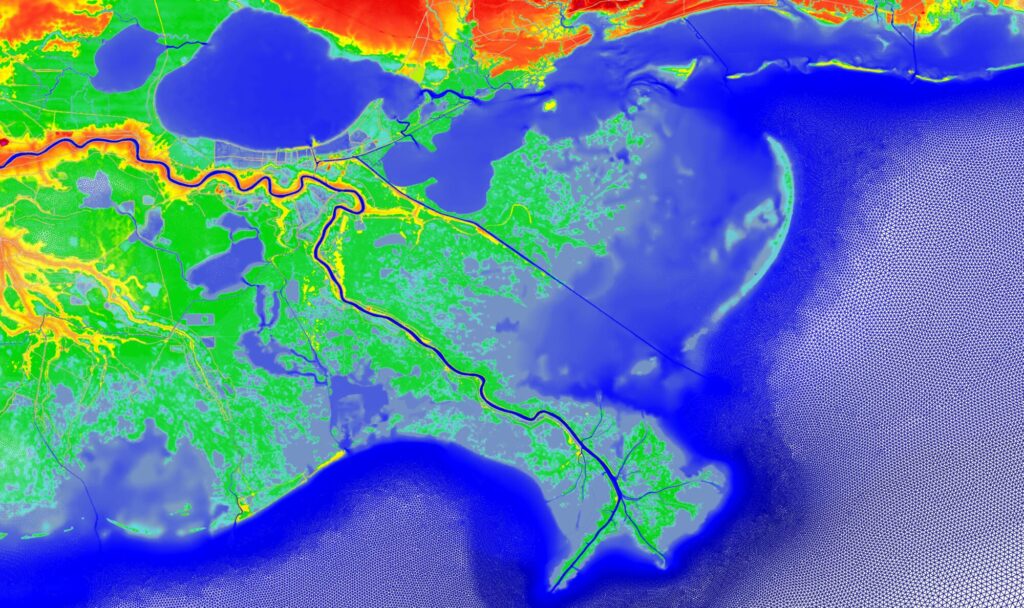
APSViz: Creating Data Products from the ADCIRC Prediction System
Investigator: Brian Blanton (RENCI, University of North Carolina at Chapel Hill)
The ADCIRC Prediction System (APS) visualization engine (APSViz) is a set of components that coordinates post-processing of real-time APS simulation results and makes products available both through a visualization website and as “direct access” data products for other decision-making platforms.
Products
- APSViz website – Visualization component to APSViz infrastructure (apsviz.adcircprediction.org)
- APSViz infrastructure – Supporting software components to APSViz
Publications / Presentations
- Blanton, B.O., R. Luettich, S. Bunya, Z. Cobell, Advances in the ADCIRC Prediction System, 104th Annual Meeting, American Meteorological Society, Baltimore, MD.
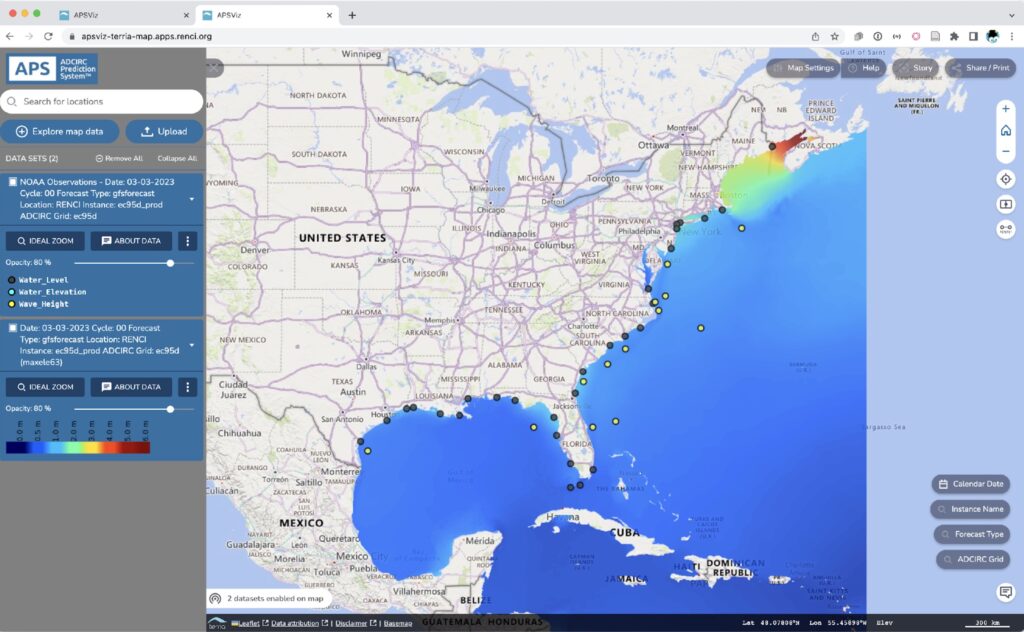
Improving the Efficiency of Flooding and Wave Prediction
Investigators: Casey Dietrich (North Carolina State University) and Clint Dawson (University of Texas at Austin)
This project improves the efficiency (speed) of predictive models for nearshore waves and coastal flooding, and improves the presentation of its forecast guidance for use by decision makers.
Products
- Kalpana – software for downscaling of flooding predictions to improve accuracy
- Subgrid ADCIRC – New version of ADCIRC that can use higher-resolution data (e.g. from DEMs) to ‘correct’ the model, available via ADCIRC github site
Publications / Presentations
- M Loveland, JD Meixner, E Valseth, CN Dawson (2024). “Efficacy of reduced order source terms for a coupled wave-circulation model in the Gulf of Mexico.” Ocean Modelling, 190, 102387, DOI: 10.1016/j.ocemod.2024.102387.
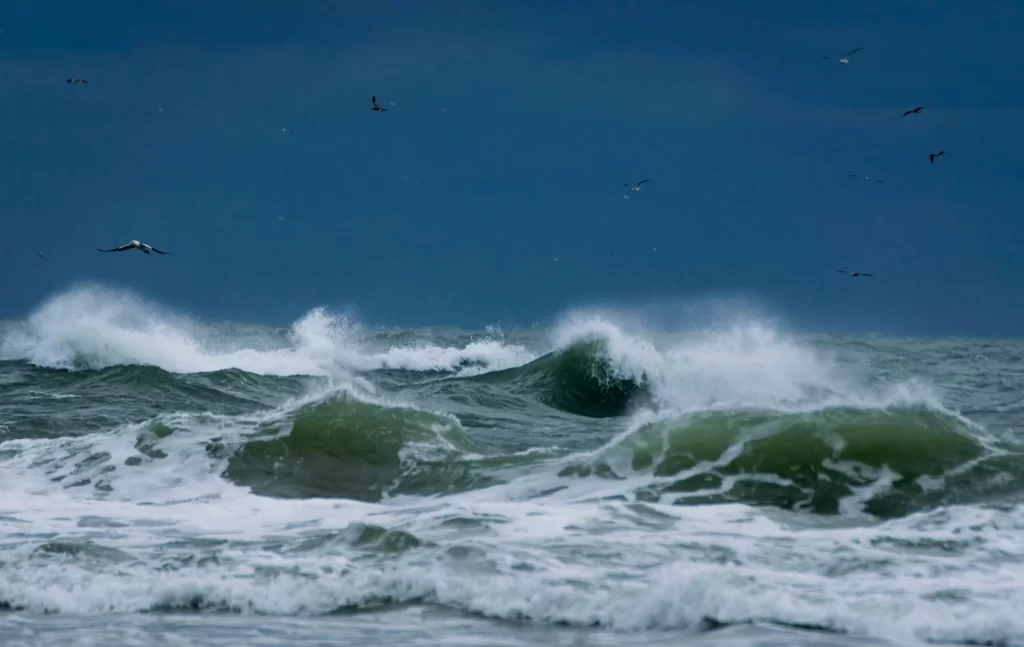
Modeling the Combined Coastal and Inland Hazards from High-Impact Hurricanes
Investigators: Isaac Ginis (University of Rhode Island) and Peter Stempel (Pennsylvania State University)
This project advances the modeling capabilities of the real-time ADCIRC Prediction System for predicting hazards and potential impacts from tropical and extratropical cyclones on critical infrastructure and communities in the U.S. to meet the requirements of their primary users.
Products
- Improved ADCIRC-WAVEWATCH III modeling system software for coastal flood & wave forecasts and hindcasts
- Improved Hurricane Boundary Layer model for landfall forecasting – software for wind forecasts and hindcasts for landfalling hurricanes
Publications / Presentations
- Adams, S., A. Becker, K. McElroy, N. Hallisey, P. Stempel, I. Ginis, and D. Crowley (2024): Ocean state rising: Storm simulation and vulnerability mapping to predict hurricane impacts for Rhode Island’s critical infrastructure, Journal of Emergency Management, Vol. 22, No 7, 47 – 61. https://pubmed.ncbi.nlm.nih.gov/38573729/
- Manzella E. Hara T. & Sullivan P. P. (2024). Reduction of drag coefficient due to misaligned wind‐waves. Journal of Geophysical Research: Oceans 129 e2023JC020593. https://doi.org/10.1029/2023JC020593
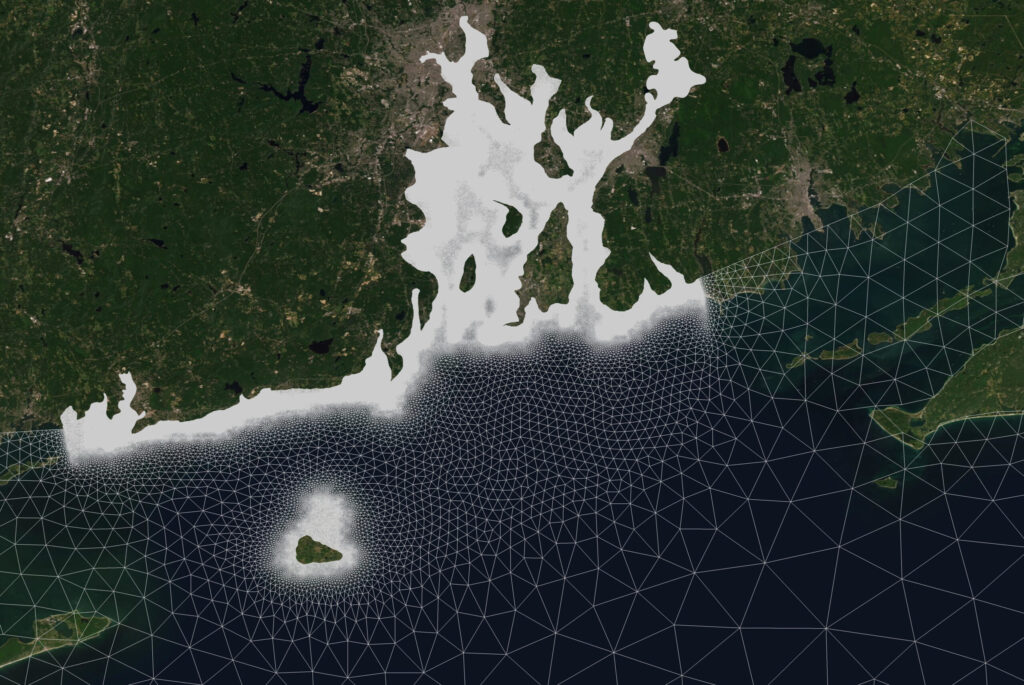
Surrogate Models for Tropical Storm Surge Prediction
Investigator: Zach Cobell (The Water Institute)
This project implements surrogate modeling techniques for tropical cyclone forecast systems for rapid probabilistic predictions during hurricane events.
Products
- Multi-fidelity ML surrogate model
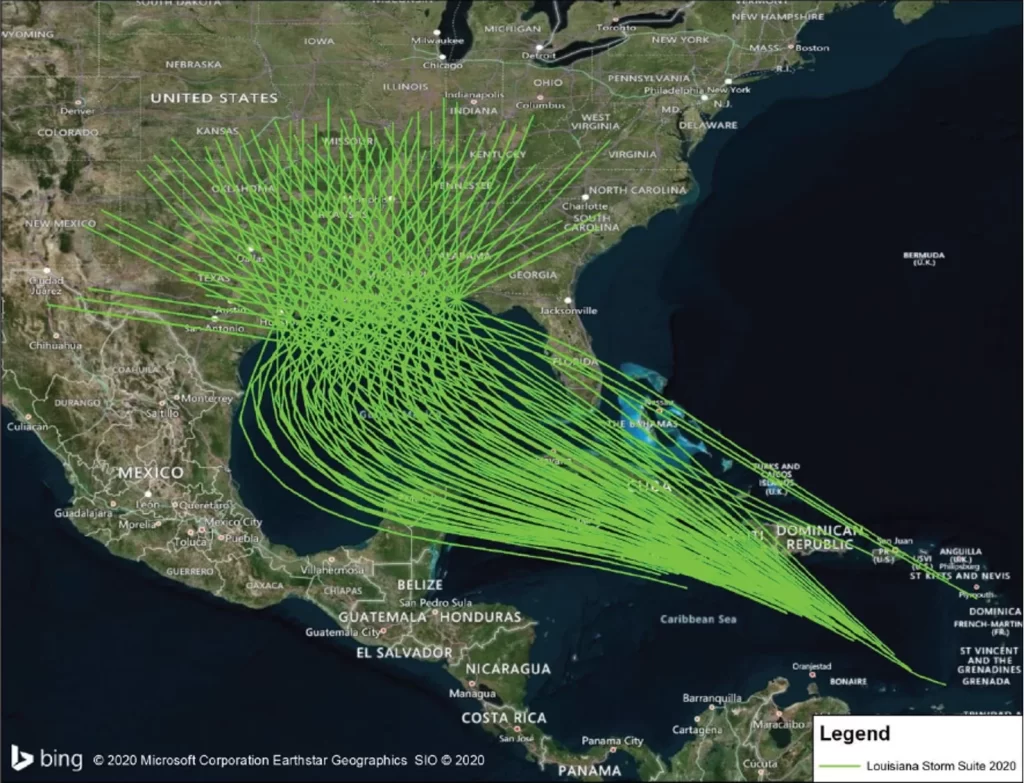
Forecasting Coastal Impacts from Tropical Cyclones along the US East and Gulf Coasts using the ADCIRC Prediction System
Investigator: Rick Luettich (University of North Carolina at Chapel Hill)
This project, funded through the National Ocean Partnership Program’s Hurricane Coastal Impacts Project, advances the ADCIRC Prediction System (APS) to include waves, surge, inundation, morphology change and damage assessment and utilizes this system to forecast the impacts of tropical cyclones on the US East and Gulf coasts during the 2022-2024 hurricane seasons.
Products
- Expanded APS workflow to include multiple meteorological forcing options, ADCIRC+SWAN and ADCIRC+WWIII hydrodynamics models, 1D XBeach morphological impacts and damage estimation
Publications / Presentations
- Bilskie, M.V., Luettich, R. (2024), “The role of advection in storm surge for Hurricane Michael (2018).” JGR-Oceans. 129(7), doi: 10.1029/2024JC021105.
- Papandreou A., T. Hara, and I. Ginis (2024): Impacts of wave-current interaction in coupled storm surge-wave model. Journal of Geophysical Research: Oceans. doi: 10.1029/2024JC021510.
- Amini, M. (2023), “Model-Data Validation and Uncertainty Quantification of the IN-CORE and HAZUS-MH Damage Models for Buildings Impacted by Hurricane Ian (2022) at Fort Myers Beach, Florida.”, ASCE Inspire 2023, Washington DC., Nov. 16-18, 2024.
- Blanton, B.O., R. Luettich, S. Bunya, Z. Cobell, (2024), “Advances in the ADCIRC Prediction System”, American Meteorological Society Annual Meeting, Baltimore, MD, 28 January – 1 February 2024
- Cobell, Z., R. Luettich, R., S. Bunya, Blanton, B.O., M.V. Bilskie, L.P. Cantor (2024), “Development of a Flexible, Multi-Model, Real Time, Compound Flood Forecasting System for Tropical and Non-tropical Events,” American Meteorological Society Annual Meeting, Baltimore, MD, 28 January – 1 February 2024
- Cox, D., (2024) “Panel Session: Hurricane Ian (2022): Lessons Learned and Case Study for Sustained Community Engagement,” NHERI Summit, College Park, MSD., May 15, 2024.
- Figueira S., (2024) “Virtual Damage Assessment of Buildings Impacted by Hurricane Ian (2022) in Fort Myers Beach, FL” 2024 NHERI Computational Symposium, Los Angeles, February 12, 2024
- Figueira S, M Amini, DT Cox, A Barbosa, “Methodology for Virtual Damage Assessment and First-floor Elevation Estimation: Application to Fort Myers Beach, Florida and Hurricane Ian (2022).” Submitted to Natural Hazards Review. (6/28/24; revised and resubmitted)
- Gorski, JF, JC Dietrich, DL Passeri, RC Mickey, RA Luettich. “Deterministic, Dynamic Model Forecasts of Storm-Driven Coastal Erosion.” Natural Hazards, DOI: 10.1007/s11069-024-07012-2.
- Jisan Ali, M., I. Ginis, K. Gao (2024), “Quantifying the Impact of Land Surface Roughness on the Hurricane Wind Structure Before Landfall”, American Meteorological Society Hurricane Conference, Long Beach CA, May 6-10, 2024. https://ams.confex.com/ams/36Hurricanes/meetingapp.cgi/Paper/442344
- Luettich, R., M. Bilskie, Z. Cobell, D. Cox, C. Dietrich, J. Gorski, I. Ginis, T. Hara, A. Papandreou, M.A. Jisin, J. Port, (2023), “Forecasts of Waves, Storm Surge, Flooding and Damage due to Hurricane Ian (2022)”, 3rd International Workshop on Waves, Storm Surges, and Coastal Hazards, Notre Dame, IN, 1-6 October 2023.
- Luettich, R., B. Blanton, S. Bunya, J. Ratcliff, Z. Cobell, N. Mumtaz, M. Bilskie, A. Papandreou, T. Hara., I. Ginis, J. Gorski, C. Dietrich, D. Cox, S. Figueira, M. Amini, (2024), “Predicting Waves, Storm Surge, Flooding and Damage due to Hurricanes Ian (2022) and Idalia (2023)”, Ocean Sciences Meeting, New Orleans, LA, 18-23 February 2024
- Luettich, R., Z. Cobell, Blanton, B.O., S. Bunya, (2024), “ADCIRC Prediction System for Modeling Compound Flooding,” American Meteorological Society Annual Meeting, Baltimore, MD, 28 January – 1 February 2024
- Mumtaz, N., Bilskie, M.V., (2023) “COAMPS-TC Ensemble Driven Storm Surge Simulations for Hurricane Ian,” 3rd International Workshop on Waves, Storm Surges, and Coastal Hazards, Notre Dame, IN, 1-6 October. (Poster)
- Mumtaz, N., Bilskie, M.V., (2023) “COAMPS-TC Ensemble Driven Storm Surge Simulations for Hurricane Ian,” Industry Summit on Nature-based Solutions, Athens, Georgia, Athens, GA, 7-8 Nov. (Poster)
- Mumtaz, N., Bilskie, M.V., (2023) “COAMPS-TC Ensemble Driven Storm Surge Simulations for Hurricane Ian,” University of Georgia Climate and Water Research Slam, Athens, Georgia, Athens, Georgia, Athens, GA, 19 April. (Oral Presentation)
- Papandreou A., I. Ginis, and T. Hara (2024), “Wave effects on storm surge under hurricane conditions”. Ocean Sciences Meeting, New Orleans, LA, 18-23 February 2024
- Pieu, NM, JC Dietrich. “Towards a Nationwide Erosion Forecast Using XBeach.” Young Coastal Scientists and Engineers – Americas 2024, Quebec City, Canada, 4 Jun 2024.

Looking Forward – NC A&T / UNC Collaborative Proposal
Investigators: Rick Luettich, Antonia Sebastian (University of North Carolina at Chapel Hill)
The project, funded as a university initiative from the UNC Chancellor’s Fund, uses the seminal Hurricane Florence (2018) as a case study to build capacity to predict the full impacts of future Tropical Cyclone-driven compound flooding events. Specifically, we are developing a comprehensive simulation of Florence using the National Weather Service’s Hurricane Weather Research and Forecasting (HWRF) model for the storm’s meteorology, the Dutch SFINCS model for inland flooding and UNC’s ADCIRC model for coastal storm surge flooding. Results will be combined with measures of social vulnerability to help identify the distribution of impacts from the storm and ultimately to help create a system that can provide end to end predictions of the impacts of future storm events.
Products
- NC A&T PI, Dr. Liping Liu, utilized results from this project as the basis of a successfully funded proposal from the Office of Naval Research
Publications / Presentations
- Liu, L., A. Tyson, Y-L. Lin, R.A. Luettich, Jr, Improvement in Track and Intensity Prediction of Hurricane Florence 2018 Using WRF and HWRF Models with Regression Analysis, Mathematical Foundations of Computing, DOI: 10.3934/mfc.2024038
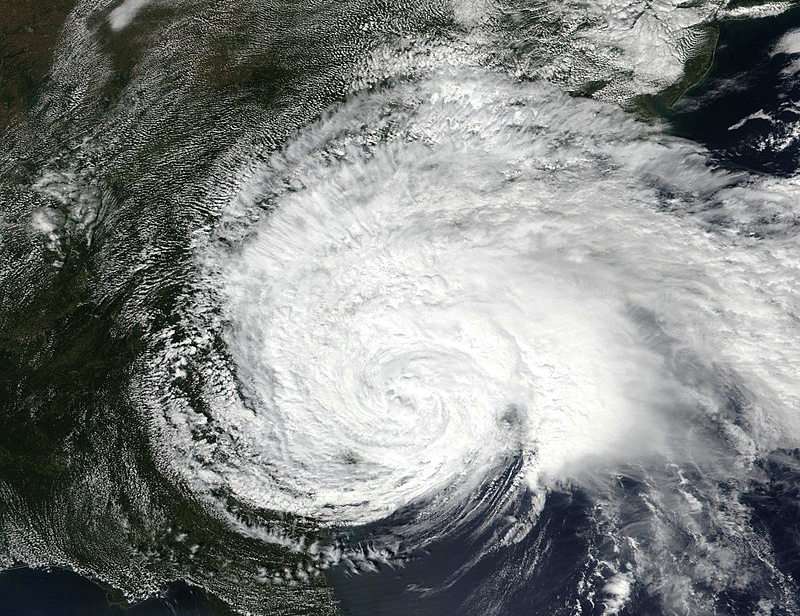
A Multi-decadal Coastal Water Level Model Reanalysis for Coastal Inundation and Flood Risk Assessment
Investigators: Brian Blanton, Rick Luettich (University of North Carolina at Chapel Hill)
The project, funded by the NOAA National Ocean Service, seeks to compute a 43-year reanalysis (1979-2022) of water levels along the US East and Gulf coasts using ADCIRC+SWAN and including ADCIRC’s innovative data assimilation algorithm for representing low frequency errors. The resulting Coastal Ocean ReAnalysis (CORA) database will complement NOAA’s network of long-term tide gauges.
Products
- Versions 0.9 and 1.1 of the CORA database which is publicly available from https://tidesandcurrents.noaa.gov/cora.html
Publications / Presentations
- https://repository.library.noaa.gov/view/noaa/66833
- Rose, L, M.J. Widlansky, X. Feng, P. Thompson, T.G. Asher, G. Dusek, B. Blanton, R.A. Luettich, Jr., J. Callahan, W. Brooks, A. Keeney, J. Haddad, W. Sweet, A. Genz, P. Hovenga, J. Marra, and J. Tilson, Assessment of water levels from 43 years of NOAA’s Coastal Ocean Reanalysis (CORA) for the Gulf of Mexico and East Coasts, Frontiers in Marine Sciences v11, doi.org/10.3389/fmars.2024.1381228
A Multi-decadal Coastal Water Level Model Reanalysis for Coastal Inundation and Flood Risk Assessment under Future Climate
Investigators: Brian Blanton, Rick Luettich (University of North Carolina at Chapel Hill)
The project, funded by the NOAA Climate Program Office, Modeling, Analysis, Prediction and Projection (MAPP) Program, seeks to build from CORA and compute long term water levels under future climate scenarios.
Publications / Presentations
- Luettich, R. J. Chen, B. Blanton, C.G. Shankar, Z. Cobell, J. Ratcliff, Y. Zheng, S. Bunya, “Blending Parametric and Gridded Models of Tropical Cyclone Wind and Pressure Fields”, 105th American Meteorological Society Annual Meeting, New Orleans, LA.
- C.G. Shankar, B. Blanton, R. Luettich,”Enhancing Tropical Cyclone Predictions with High-Resolution Wind Fields: A Nested Moving Grid Approach for Hurricanes Florence and Ida”, 105th American Meteorological Society Annual Meeting, New Orleans, LA.
Global ESTOFS within an Ensemble Based Forecasting Framework
Investigator: Shintaro Bunya (University of North Carolina at Chapel Hill)
The project, funded by the NOAA National Ocean Service, via a subaward with the University of Notre Dame, is to enhance NOAA’s Global Extratropical Storm and Tide Operational Forecast System (Global ESTOFS) with new features including ensemble forecasting, WAVEWATCH III coupling, National Water Model coupling, and subgrid-scale modeling. CNHR research scientist Shintaro Bunya led this award and is developing a subgrid-scale model that enhances Global ESTOFS by incorporating unresolved subgrid features, such as smaller channels that significantly influence total water level predictions.
Products
- Subgrid-scale model feature is currently undergoing testing and will be made available at Discontinuous Galerkin Shallow Water Equation Model (DGSWEM) code repository. https://github.com/foci/dgswem
Publications / Presentations
- Bunya, S., Wirasaet, D., Kennedy, A.B., Westerink, J.J., Fu, G., and Luettich, R., Subgrid-scale Storm Surge Coastal Flood Modelling in ADCIRC, 3rd International Workship on Waves, Storm Surges and Coastal Hazards, Oct 5, 2023, South Bend.
- Westerink, J.J., Bunya, S., Wirasaet, D., Kennedy, A., Fu, G., Improvement of 2D Surge and Tide Forecast System with Sub-Grid Scale Correction, American Geophysical Union Annual Meeting 2024, Dec 12, 2024, Washington D.C.
